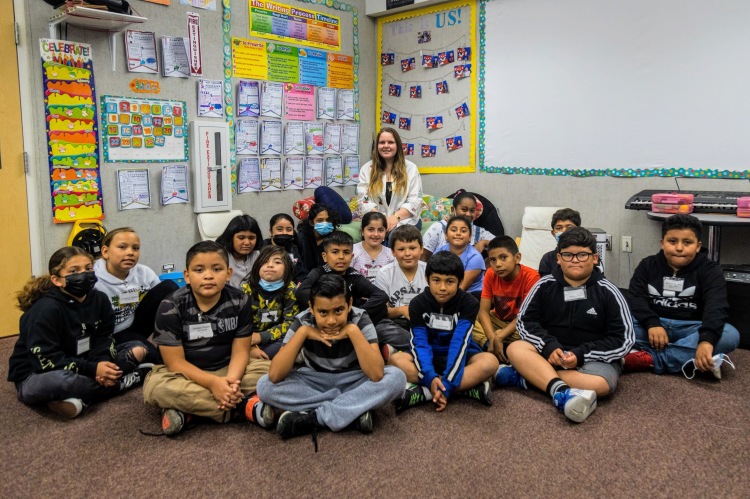In Lennox, the fourth graders at Buford Elementary sit patiently, waiting in the classroom for their guest visitor to arrive this morning. She’s coming to teach about art, and she’s an eighth-grader from Westside Neighborhood School (WNS), a private school in Playa Vista, California.

While relatively close geographically, a hop skip down a few exits on the 405 freeway, Lennox and Playa Vista are entirely different neighborhoods. Playa Vista is often called the center of “Silicon Beach,” with regional offices for companies like Yahoo!, Google, Youtube, and many tech startups. Coffee shops, a Whole Foods, movie theaters, and small parks are a walking distance for most residents.
Lennox, a predominantly Latino neighborhood, has 22K people packed into a 1.2 square mile unincorporated area of Los Angeles. Almost fifty percent of adults (age twenty-five or older) have not completed high school, and the poverty rate (20%) is higher than in all surrounding neighborhoods. There is no Whole Foods within walking distance.
But these statistics mean nothing to the students in the classroom. They are eager to see their guest teacher and learn about art.
At Westside Neighborhood School, the eighth-grade capstone is called the Passion Project. It is designed as a culminating activity that merges a student’s personal interests or passions, their talents and skills, and the desire to find solutions or bring awareness to a societal issue. As with LumenSparQ, the Passion Project sees a foundation in the UN Global Sustainable Development Goals.
It is through the Passion Project that Zoë begins her work. She wants to focus on art, her true passion. She has a desire to bring art to schools that may not have the full set of resources or time in their schedule to accommodate this traditionally extra-curricular activity. Her initial plan is to acquire art supplies through fundraising and ask a local artist to teach a lesson in an elementary school that could benefit from both.
With deadlines approaching in the Passion Project timeline and her two objectives feeling unreachable, Zoë forgoes the volunteer artist portion and decides to take on this role herself.
At this point, The Ember Project is introduced to the eighth-grade class at WNS, aimed primarily at projects focused on underserved or underrepresented communities. Zoë seizes this opportunity for funding support and submits an application to be an Ember Project recipient. In the meantime, while waiting to hear about selections, Zoë seeks advice from her elementary school-aged brother.
“If you could have your own set of art supplies, what would it look like?” inquires Zoë.
Her brother immediately dives into various art media, a clay set, paints, a good pen, and an artboard. She compiles her list on Google Sheets and adds links to items to purchase online. She calculates her quantities based on twenty to thirty students.
The Ember Project recipients are announced the following week, and Zoë is one of two. The other project will focus on bringing awareness to the underrepresentation of certain groups in the entertainment industry, the systems perpetuating this discrepancy, and highlight up-and-coming artists through a magazine publication.
With the confirmation of funding support and a school connection made through LumenSparQ, Zoë gets to work on finalizing her budget spreadsheet and creating her lesson plan. She chooses to focus on artists from diverse backgrounds who use a lot of color and color blending in their work.
Art supplies arrive just in time. The day before the lesson, Zoë carefully assembles her kits for each child. These will be used during the lesson and then taken home to keep.

The day arrives for Zoë to teach her lesson, and the students in Ms. Lewis’ classroom are excited to begin. Zoë introduces herself to the class. She shares her Passion Project and the reason she is here today. She distributes the art kits and begins her lesson.
After highlighting a few artists and their use of color and color blending, Zoë prompts the students on where they see color in nature, what they think the meaning of “Pop Art” is, and what happens when we try to mix various colors in paint and clay.
Zoë then guides students through exploration with clay modeling and acrylic paints, giving them the time and space to test things out, be playful, and stretch their creative thinking. The students are immediately engaged, and a quiet hum of activity overtakes the room.
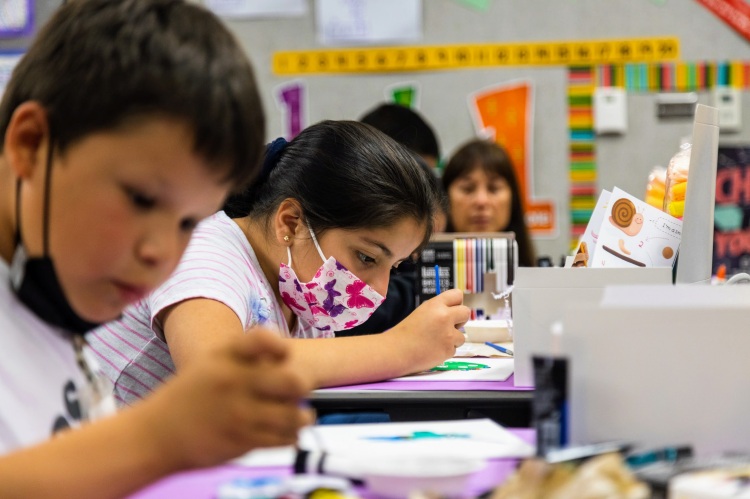



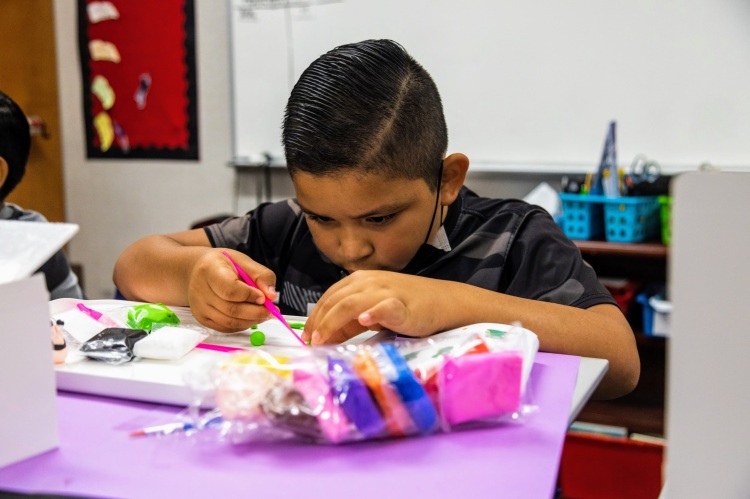
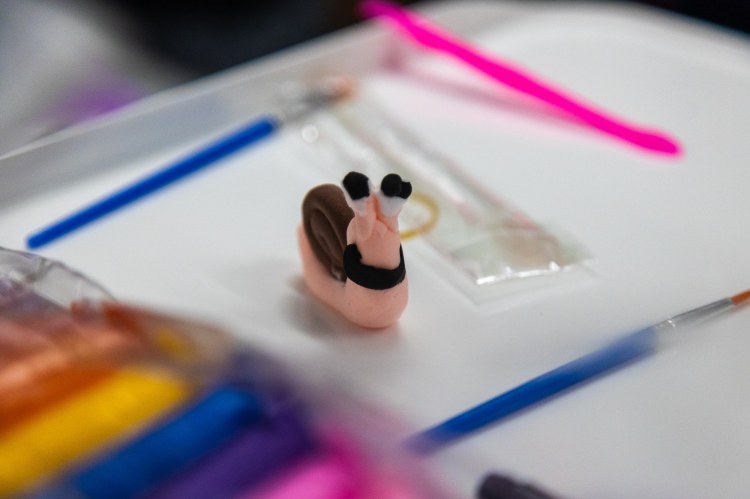
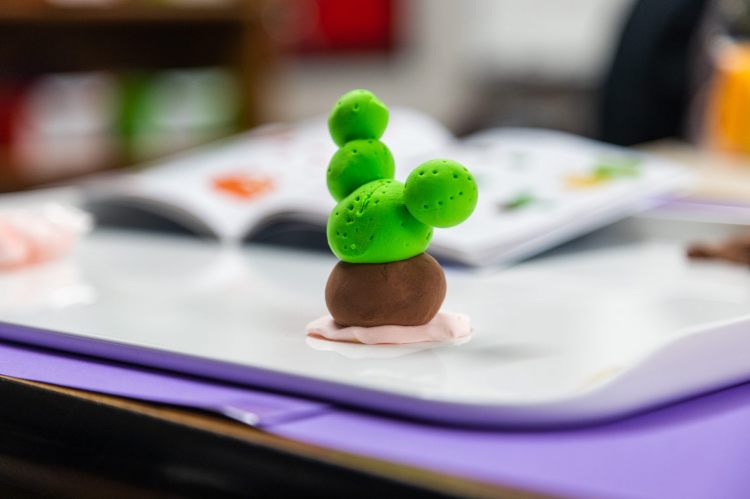



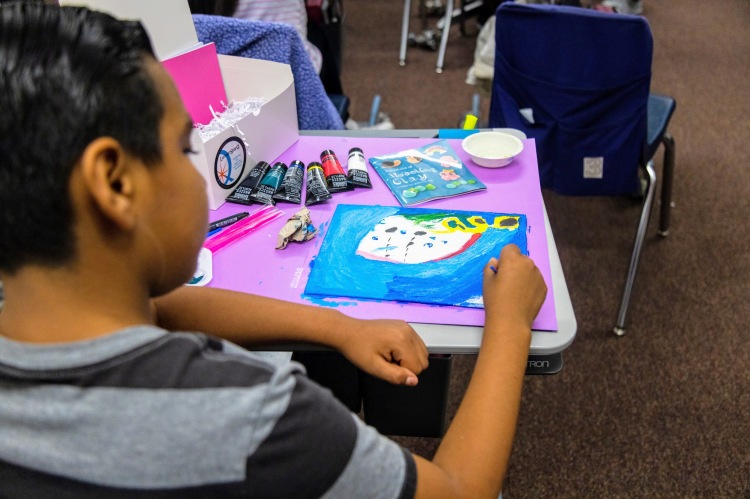

As the images above show, these budding artists wasted no time getting creative. Unfortunately, the day ends too quickly for all of us, but there are smiles and high fives all around. We end the session with a short Q and A for Zoë and the students.
“What is life like as an eighth-grader?”
“Where does color come from?”
“Have you always enjoyed doing art?”
Keep the questions coming. It’s how we learn best. A curious mind leads us down paths we didn’t know were there until we took that first step.
Congratulations to Zoë, the fourth-grade class at Buford Elementary, and all involved in our first Ember Project.
“I’m just really grateful that I got to do this and to share the joy of creativity and share the joy of art. And I guess there’s nothing that compares to seeing [these students] with the art supplies and having that joy of just doing what they want to do, expressing themselves.”
Zoe, grade 8
